Preschool math activities make learning fun and natural for young children. At this stage, kids are curious and start noticing numbers, shapes, and patterns all around them.
Simple activities like counting snacks, building with blocks, or spotting shapes in the home turn everyday moments into learning opportunities.
I believe math should feel playful, not stressful, so children stay confident and excited about numbers. Hands-on games, songs, and movement keep their interest high while building early problem-solving skills.
In this blog, I will share practical preschool math activities that fit easily into daily routines. These ideas show that math is not only about worksheets – it can also be active, creative, and enjoyable for both children and parents.
Why Children Need Preschool Maths Activities?
Math activities for preschoolers grow step by step, with each age bringing new skills.
By age 3, children start recognizing numbers on books, cards, or toys and can count to five using blocks, fruits, or snacks. They also begin identifying simple shapes like circles, squares, and triangles.
At age 4, counting often reaches ten or more, patterns become easier to copy, and sorting by color, size, or shape turns into fun play.
By age 5, children usually count to twenty, understand basic addition, and compare sizes or lengths. These early skills create a strong base for future math learning.
Hands-On Math Activities
Hands-on math activities for preschoolers help them understand numbers and shapes in a playful way. Using everyday objects makes learning simple and fun.
1. Counting Objects
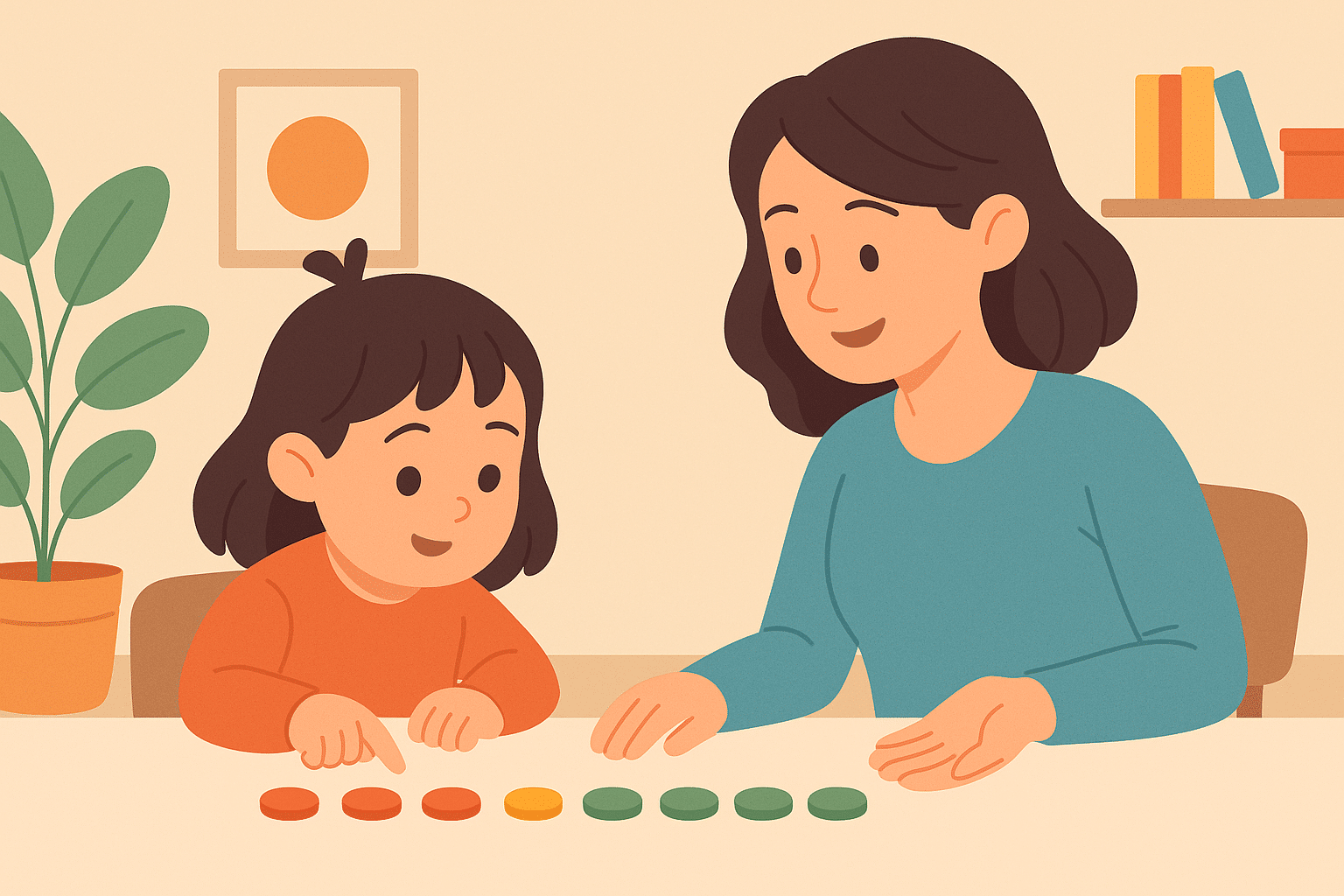
Children can practice counting with simple items like blocks, buttons, or snacks. Each object they touch and count makes numbers feel real.
As they see the pile grow, they connect numbers to actual quantities. This hands-on approach builds confidence and lays the groundwork for future math skills.
2. Shape Hunts
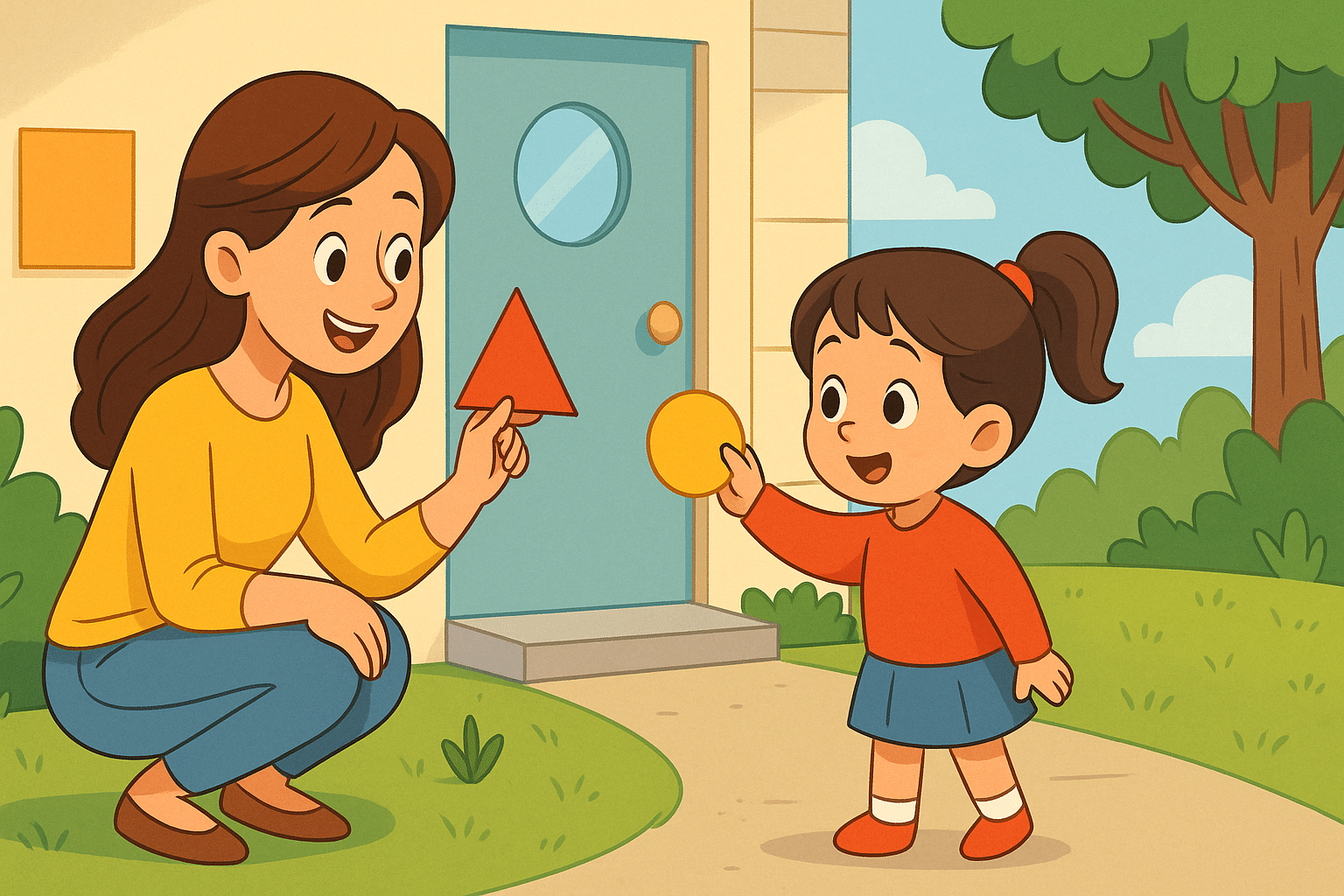
Shape hunts help children find math in everyday spaces. Indoors, they can spot circles in clocks, squares in windows, or triangles in wall hangings.
Outdoors, they may notice shapes in road signs, leaves, or playground equipment. Naming these shapes teaches real-world recognition, sharpens observation, and builds the habit of noticing details.
3. Sorting
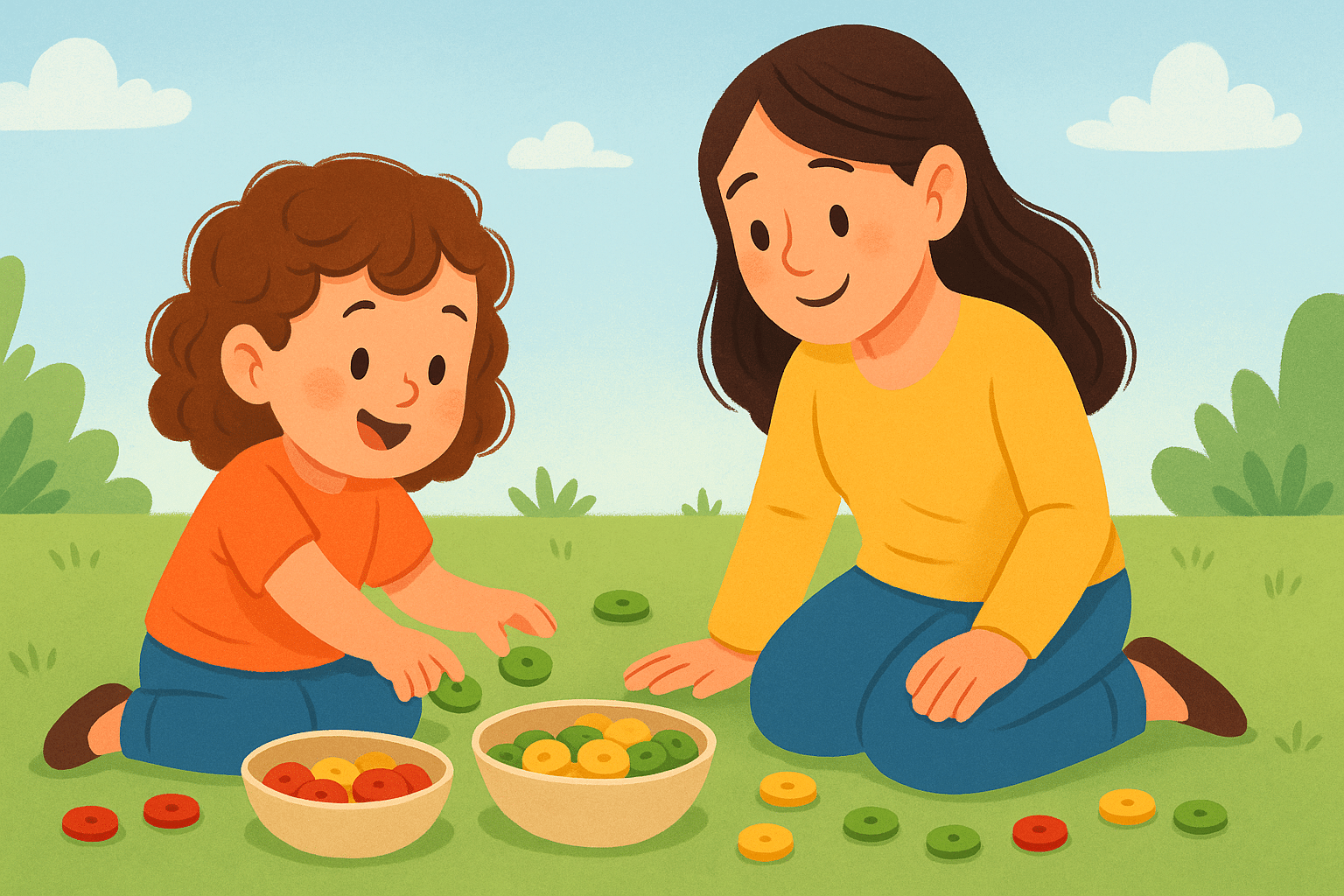
Sorting helps children learn to organize and compare. Give them items like buttons, toy animals, or blocks to group by color, shape, or size.
This builds pattern recognition, attention to detail, and clear thinking. Sorting also lays the groundwork for later skills such as classifying, graphing, and basic addition.
4. Playdough Math
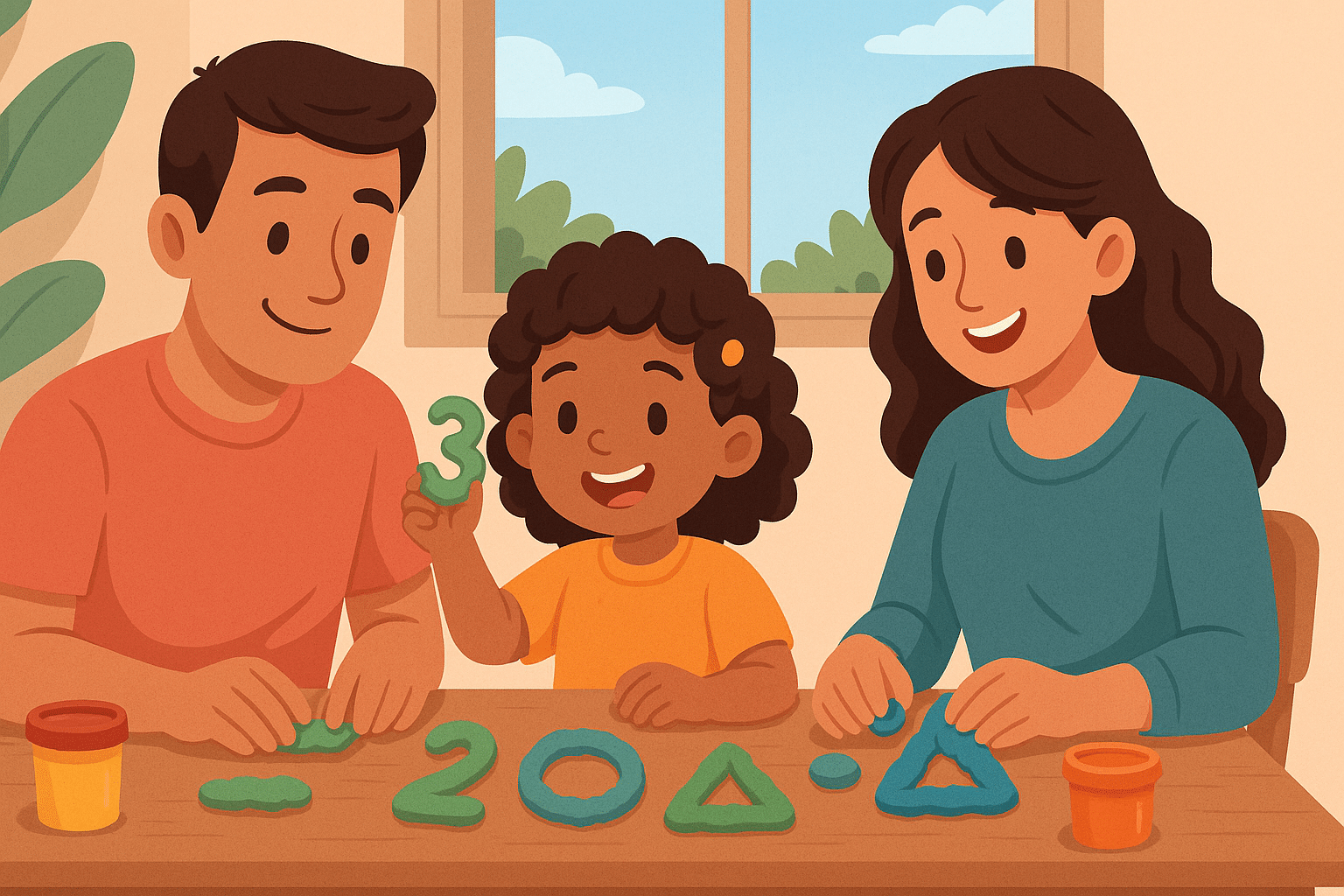
Playdough helps children learn through creativity. They can roll it into numbers or shape it into circles, squares, and triangles.
This builds number and shape recognition while strengthening fine motor skills. Playdough math keeps learning active and enjoyable, giving children hands-on practice with early math concepts.
5. Pattern Play
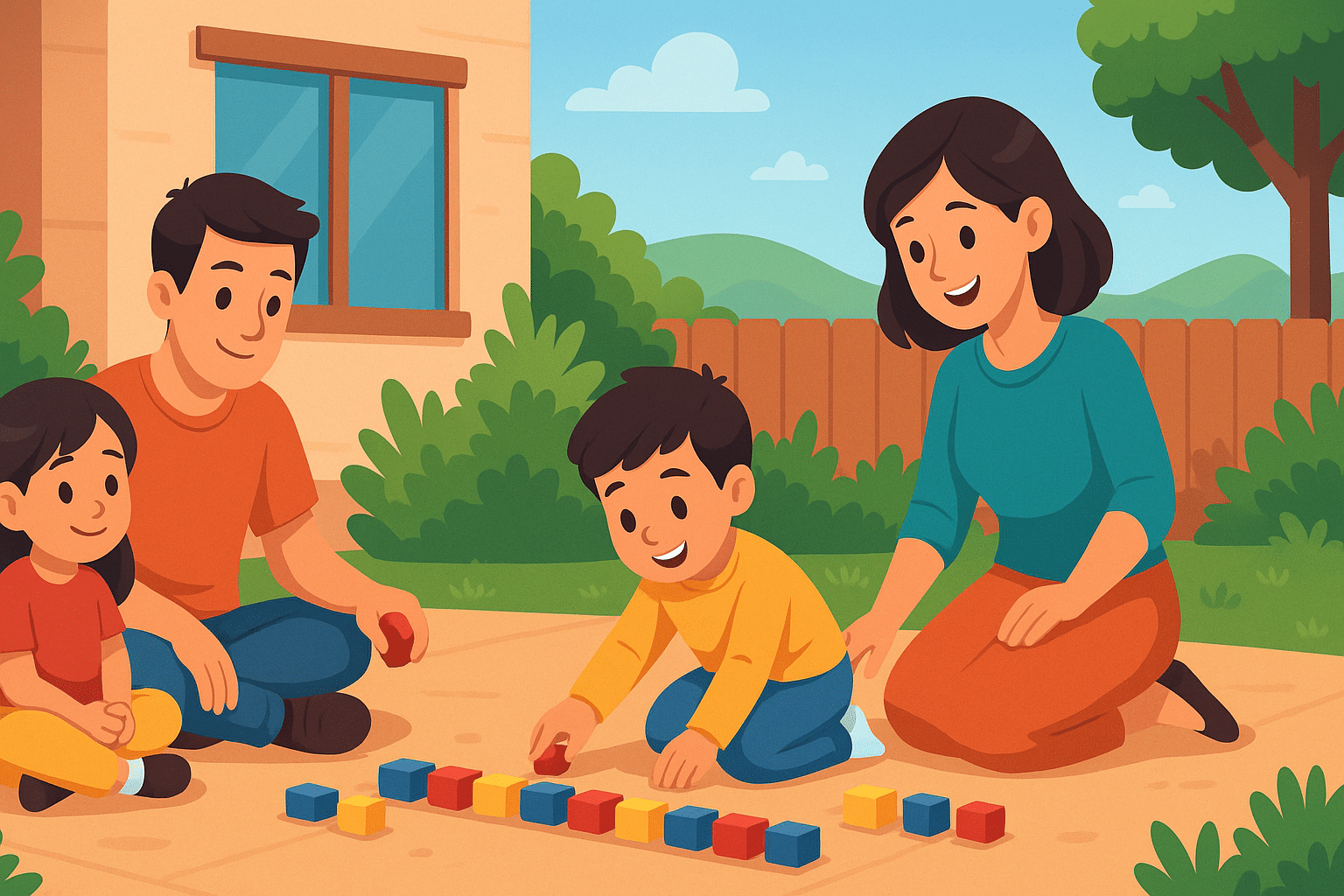
Pattern play helps children see order in the world around them. Using beads, LEGO bricks, or colored blocks, they can create simple sequences like red-blue-red-blue or big-small-big-small.
As they repeat these patterns, they begin to understand how things can be arranged in a predictable way. This builds early logic skills and prepares them for concepts like sequencing and math operations later on.
The activity also encourages creativity, as children experiment with their own designs while learning the basics of repetition and structure.
Game-Based Math Activities
Games make math exciting and active for preschoolers. They learn while playing, which keeps them engaged and curious.
6. Math Bingo
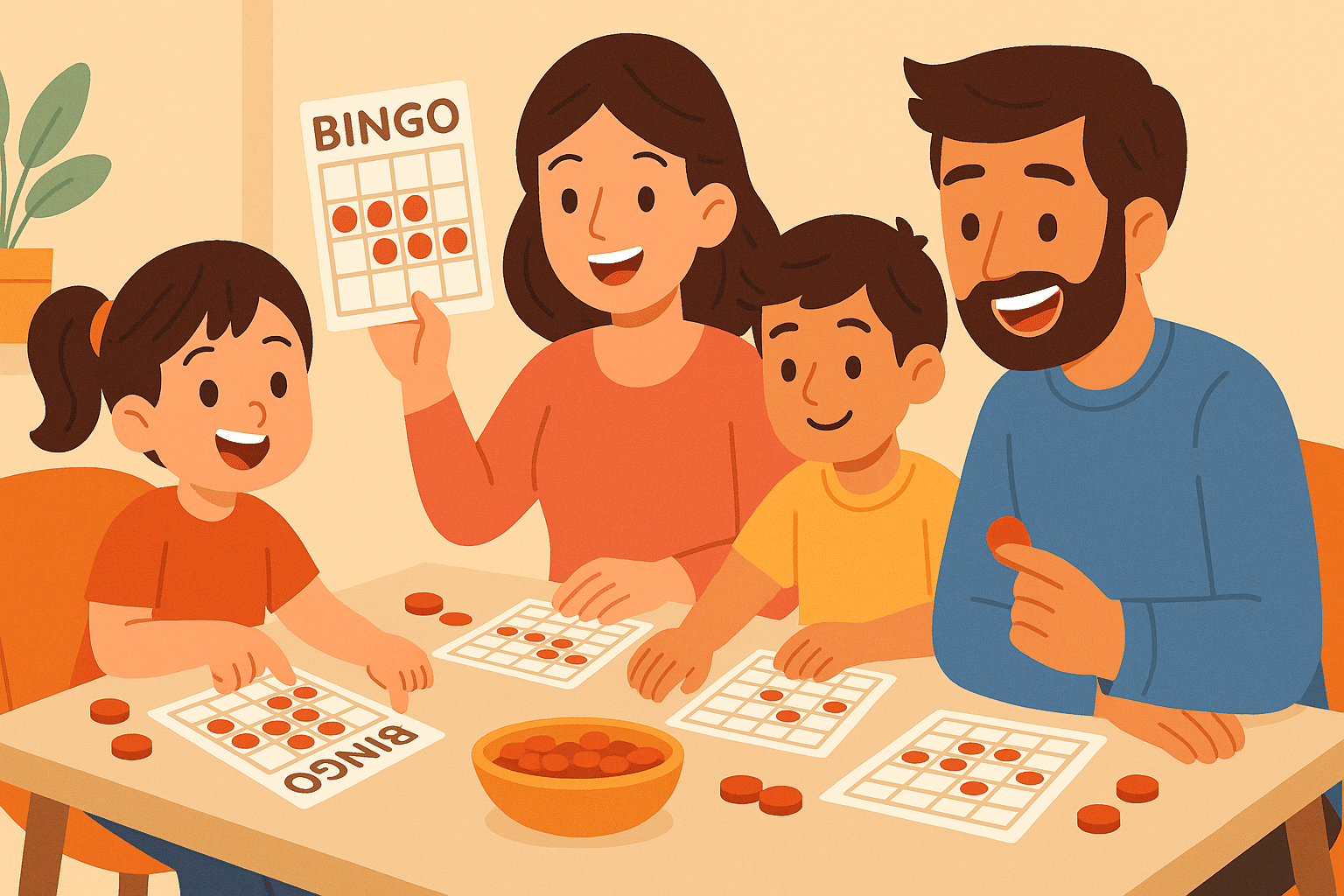
Math bingo is an exciting way to turn learning into a game. You can make simple cards with numbers, shapes, or even colors. As you call out a number or show a shape, children listen carefully and search for the match on their card.
Each time they mark a space, they practice recognition and focus, which strengthens memory and attention. The joy of filling rows or shouting “bingo” keeps them motivated and eager to participate.
7. Dice Games
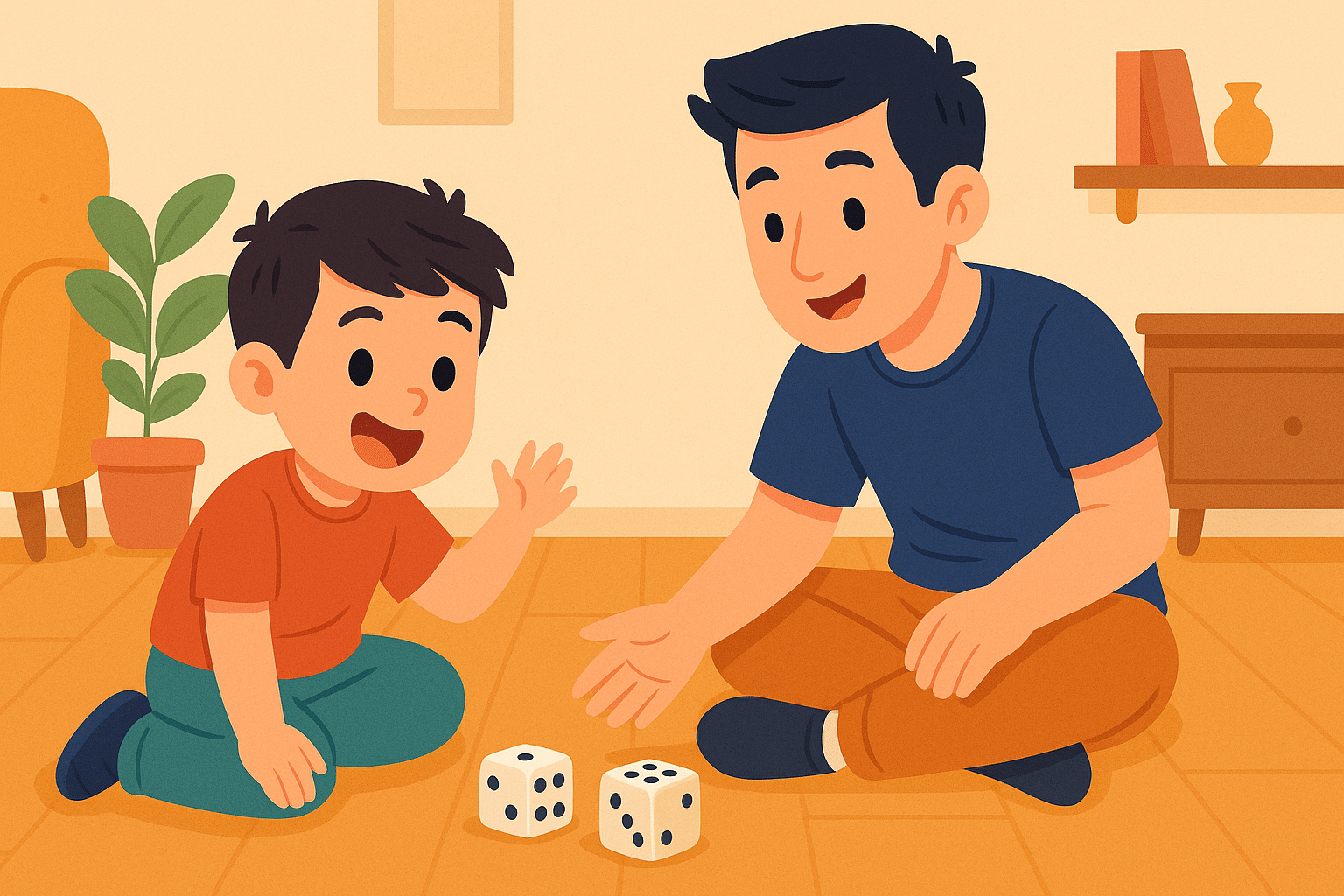
Dice games are an easy way to practice early math. Children roll a die, count the dots, and match them to a number by collecting toys or blocks.
This builds one-to-one correspondence, where each object represents a number. Dice games also strengthen counting speed, number recognition, and turn-taking skills while keeping learning playful.
8. Card Games
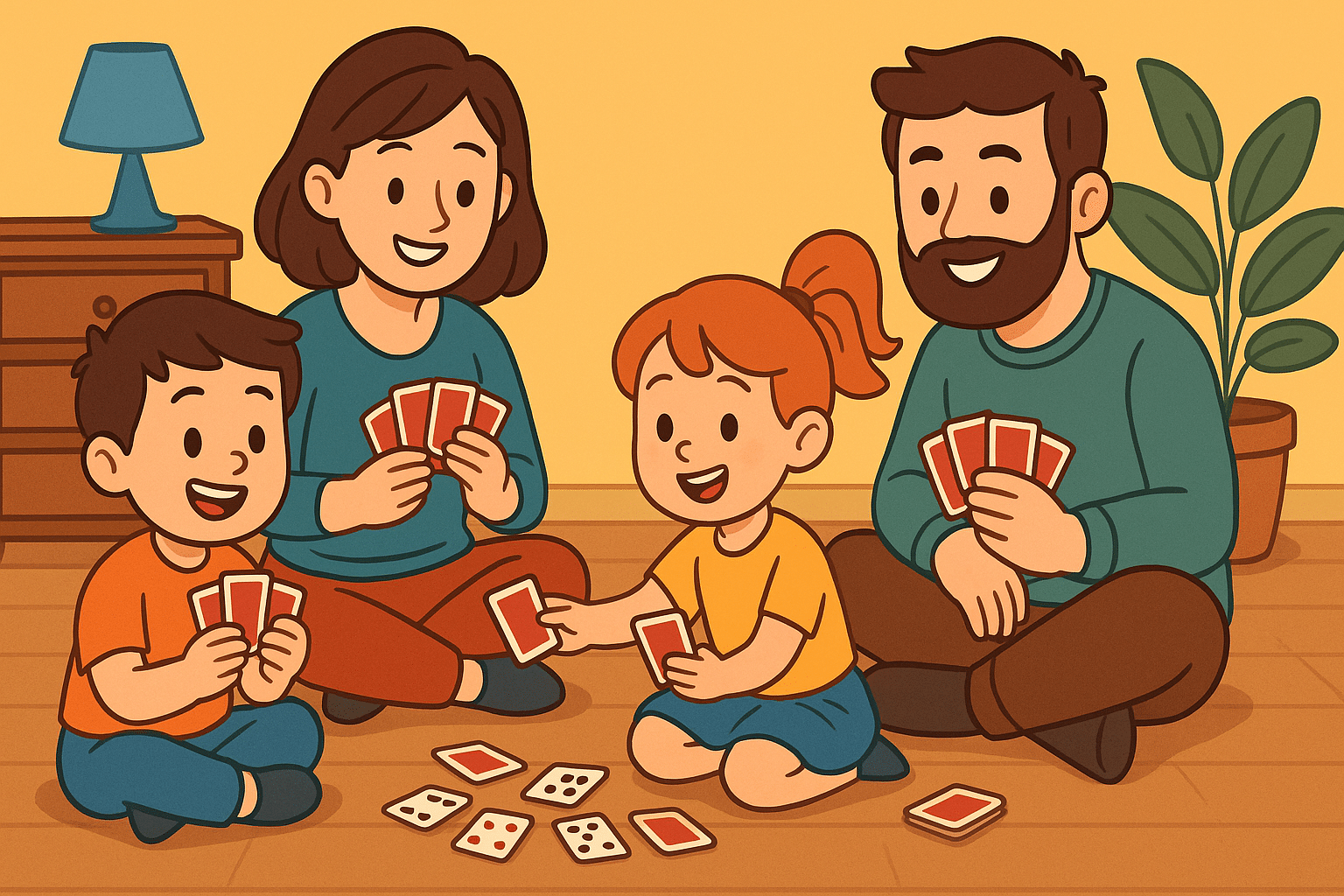
Card games make learning numbers interactive. Matching games connect symbols, like the number 3, to amounts shown with dots or pictures. “Go Fish” with number cards strengthens memory, attention, and social skills through asking and responding.
Playing with cards gives repeated practice with numbers, builds confidence, and supports number sense and problem-solving.
9. Hopscotch with Numbers
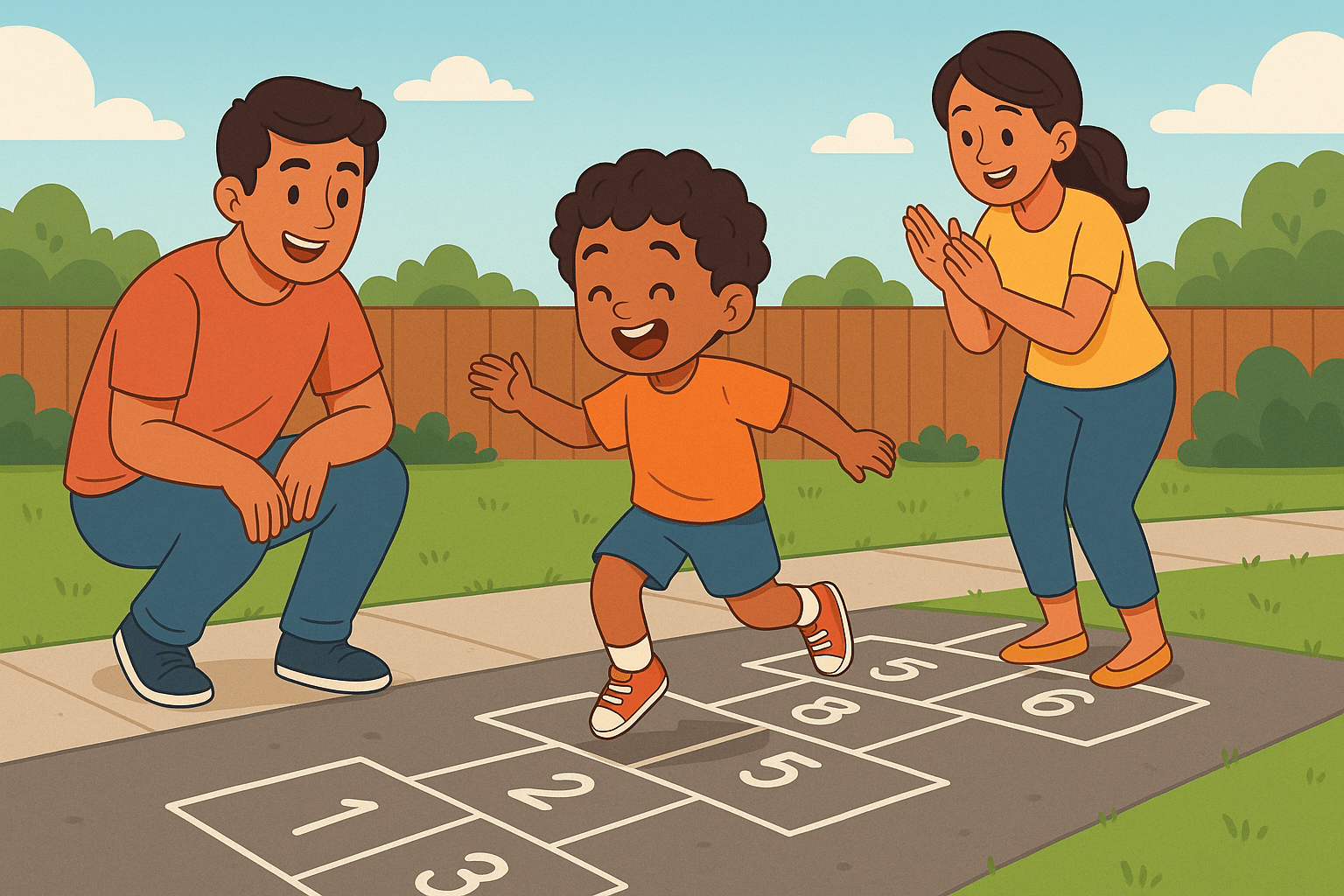
Hopscotch with numbers combines movement and counting. Draw numbers in the squares, and children jump through while saying each one out loud.
This connects movement with number recognition and reinforces balance, coordination, and rhythm. It also sharpens focus as children hop and count together, turning a classic game into a simple tool for math and fitness.
10. Dominoes
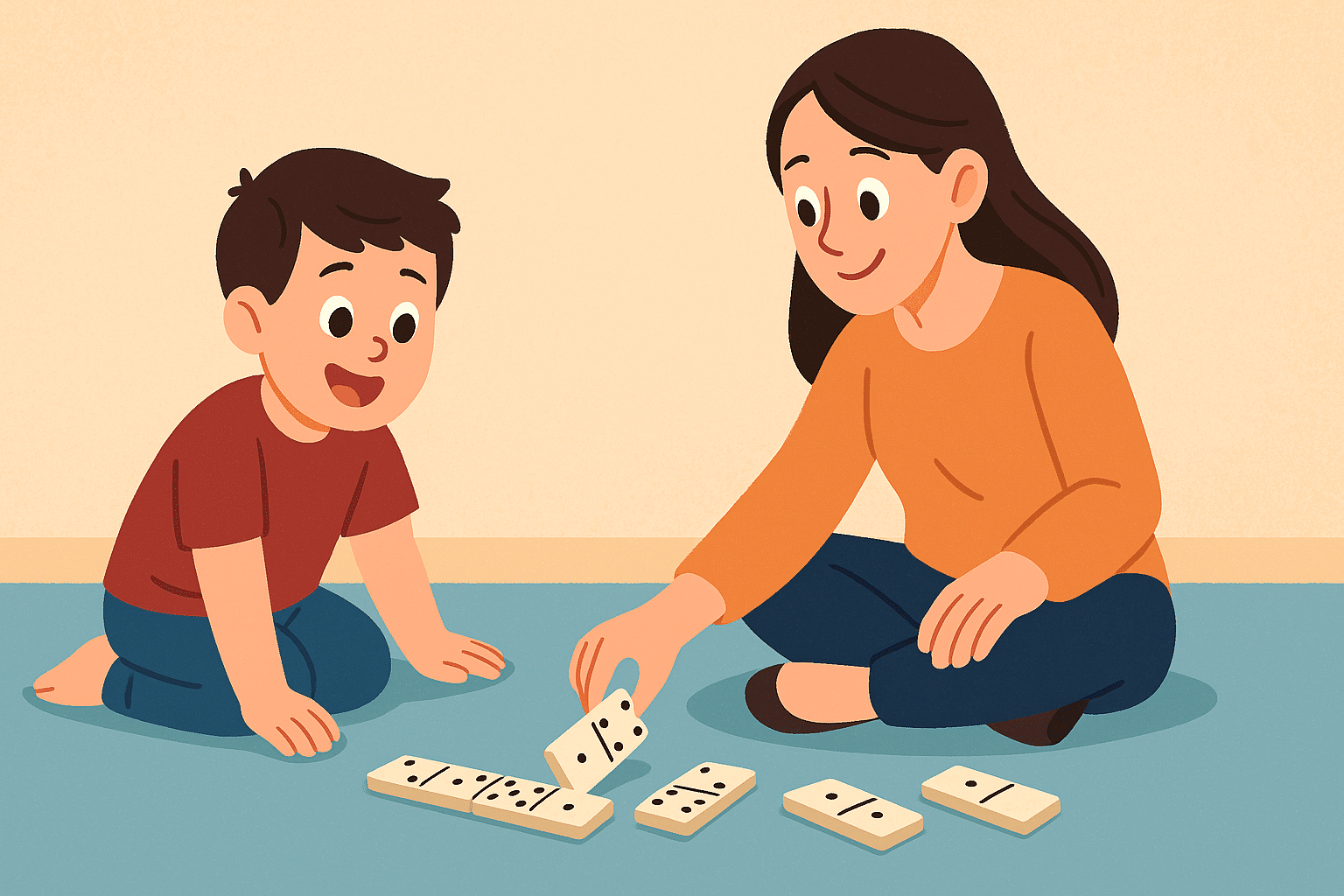
Dominoes help children practice early math through play. They count dots, match numbers, and connect tiles to strengthen counting and recognition.
Finding the right piece builds logic and problem-solving, while the game encourages patience and focus. Playing in pairs or groups also supports sharing, turn-taking, and cooperation.
Music, Stories & Movement Math Activities
Music, books, and movement bring math to life. These activities mix fun with learning and help children remember concepts more easily.
11. Counting Songs

Counting songs teach numbers through rhythm and rhyme. Songs like Five Little Ducks or Ten in the Bed help children learn number order and recall through repetition.
Adding clapping, acting, or hand motions keeps them engaged and supports listening and language skills. By combining music, movement, and math, counting songs make number practice clear and enjoyable.
12. Math-Themed Storybooks
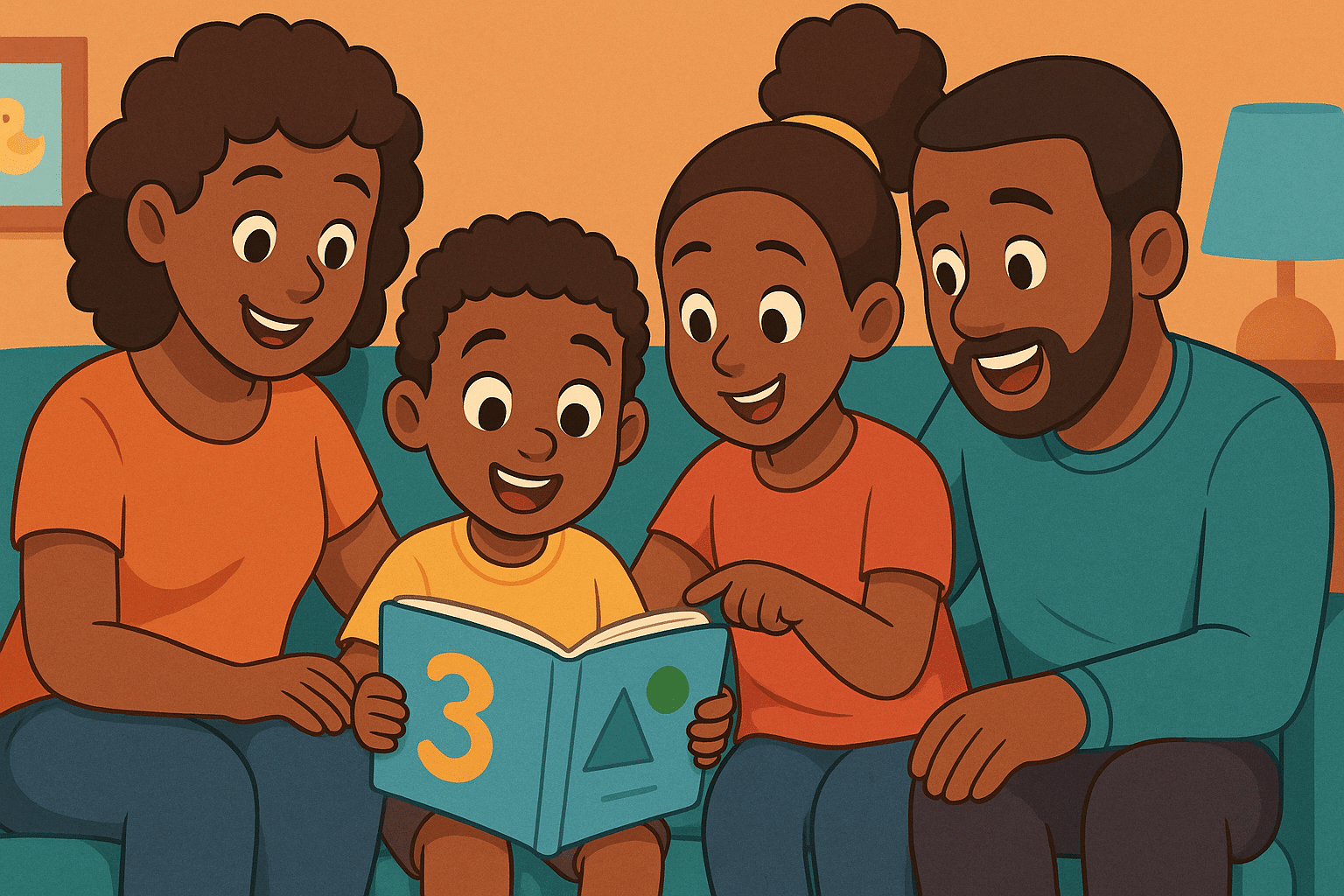
Reading storybooks with math ideas helps children connect numbers and shapes to daily life. Characters and situations make numbers easier to understand while building early math skills.
Storytime becomes another way to practice math in action. These books also encourage children to see math as part of everyday experiences.
13. Movement Activities
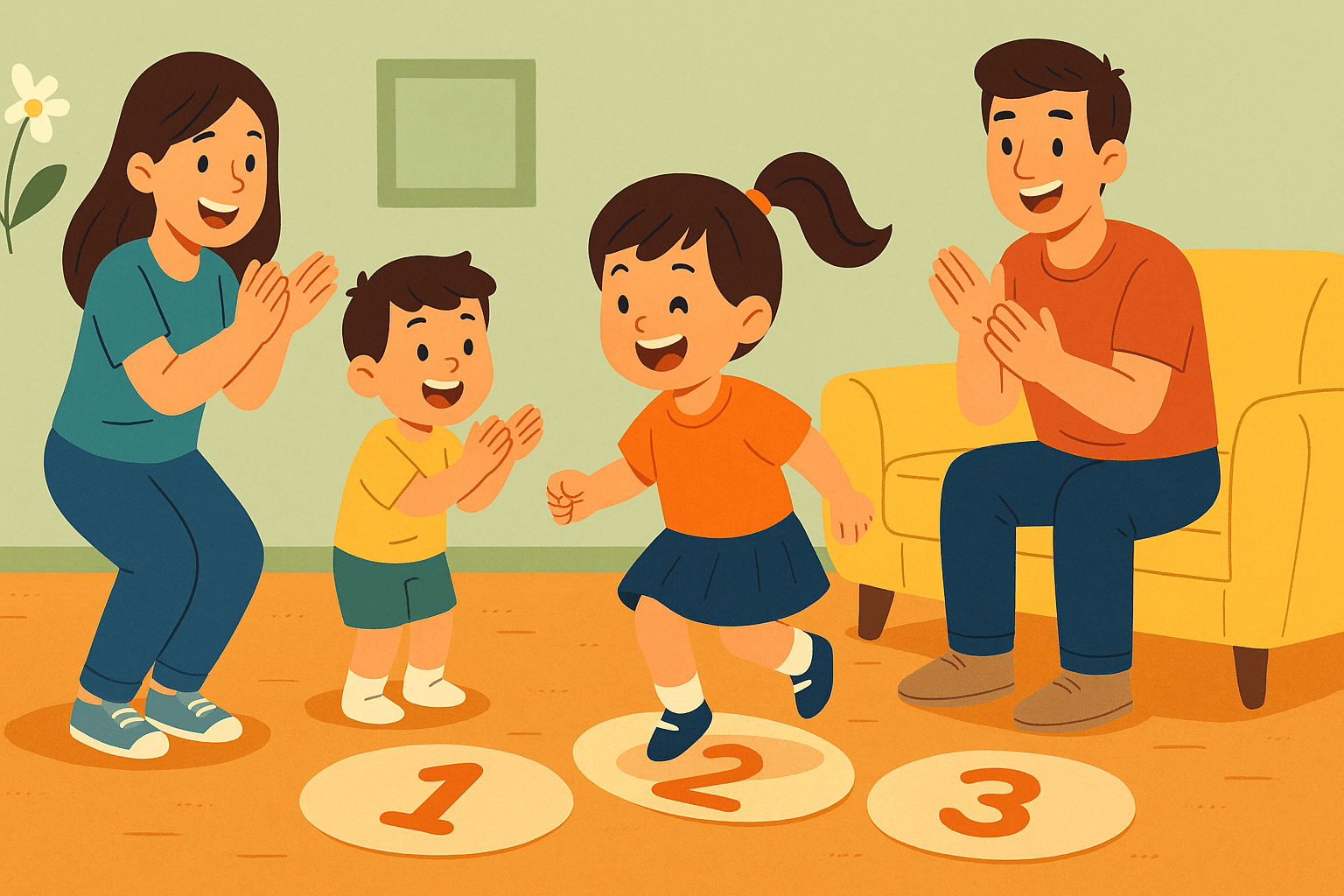
Movement activities make math active. Children can jump on numbers, clap to patterns, or march while counting steps. These actions connect movement with numbers and support coordination, rhythm, and counting together.
This type of learning works especially well for children who enjoy active play. By linking motion with numbers, movement activities show that math can be both dynamic and practical in everyday life.
Outdoor & Nature Math Activities
The outdoors is full of chances to learn math. Nature and play provide fresh ways for children to count, compare, and measure.
14. Nature Walks

Nature walks help children practice math in daily settings. They can collect leaves, stones, or flowers and count each piece.
Sorting by size, shape, or color builds pattern recognition, while comparing groups teaches more and less. Walking outdoors keeps them active and shows that numbers and math are part of their surroundings.
15. Tower-Building Challenges
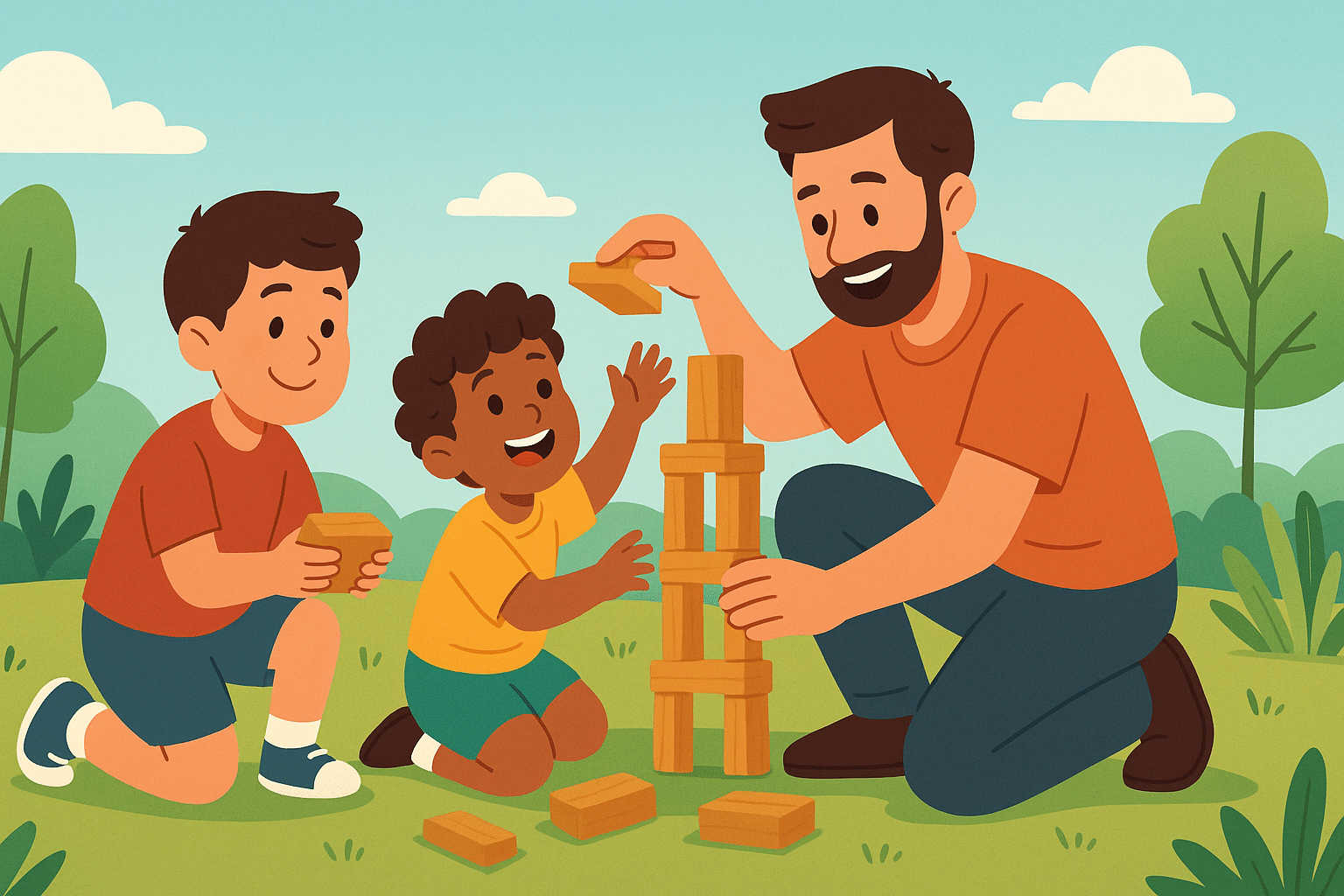
Sand and water play teach measurement. Children fill and pour cups to see how amounts change with container size.
They compare scoops to learn more, less, and equal, and use terms like “full,” “empty,” and “half.” This simple activity makes math ideas easier to understand.
16. Sand & Water Play
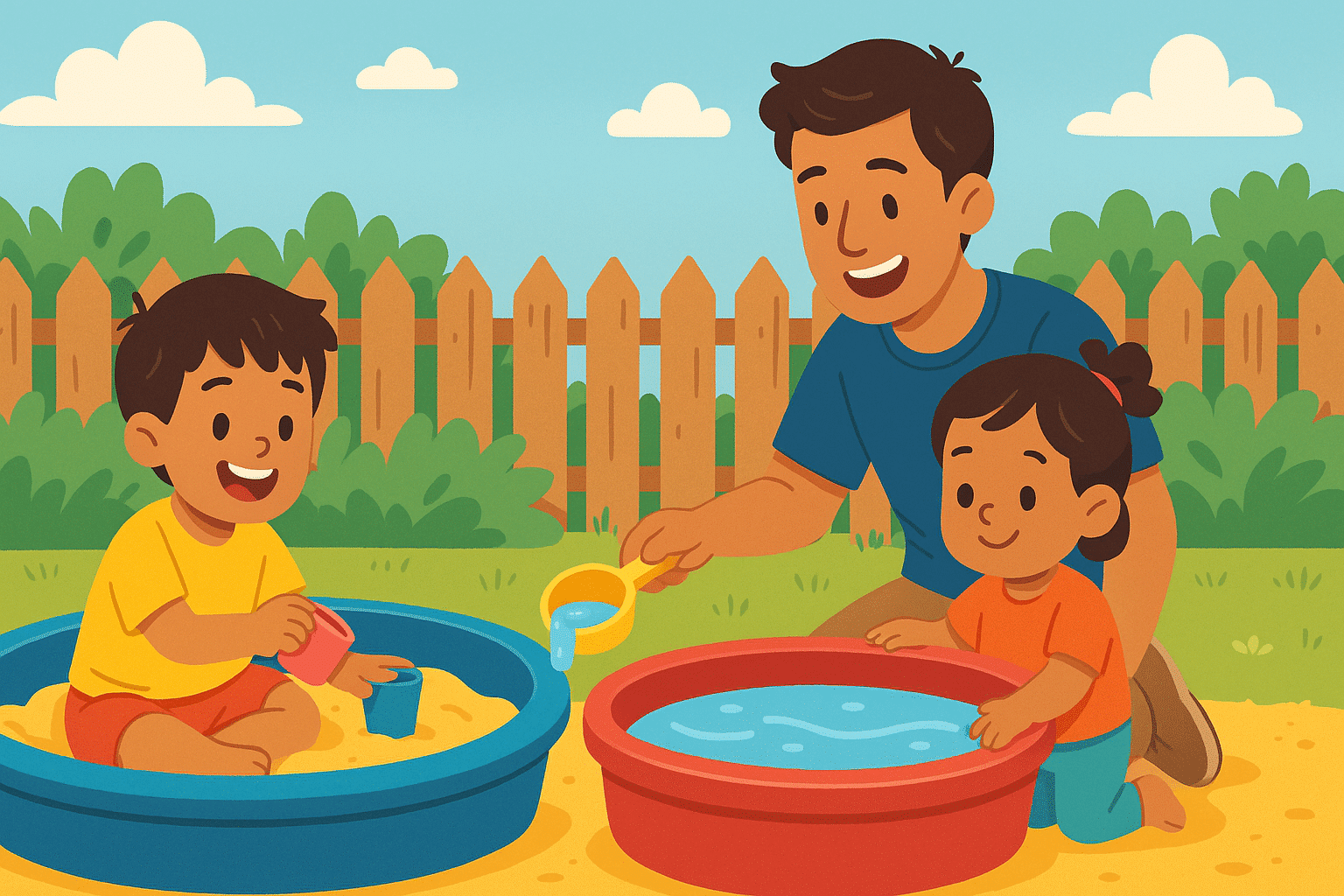
Sand and water play help children practice early measurement. By filling and pouring cups, they see how amounts change with container size. Comparing scoops teaches concepts like more, less, and equal.
They also learn terms such as “full,” “empty,” and “half,” while experimenting with how much a cup can hold or how sand shifts when poured.
It also supports problem-solving and fine motor control. Sand and water play make abstract math concepts easier to understand through direct experience.
Daily Life Math Activities
Math becomes easier for preschoolers when it is part of daily routines. Everyday tasks give natural chances to count, compare, and measure.
17. Snack Math
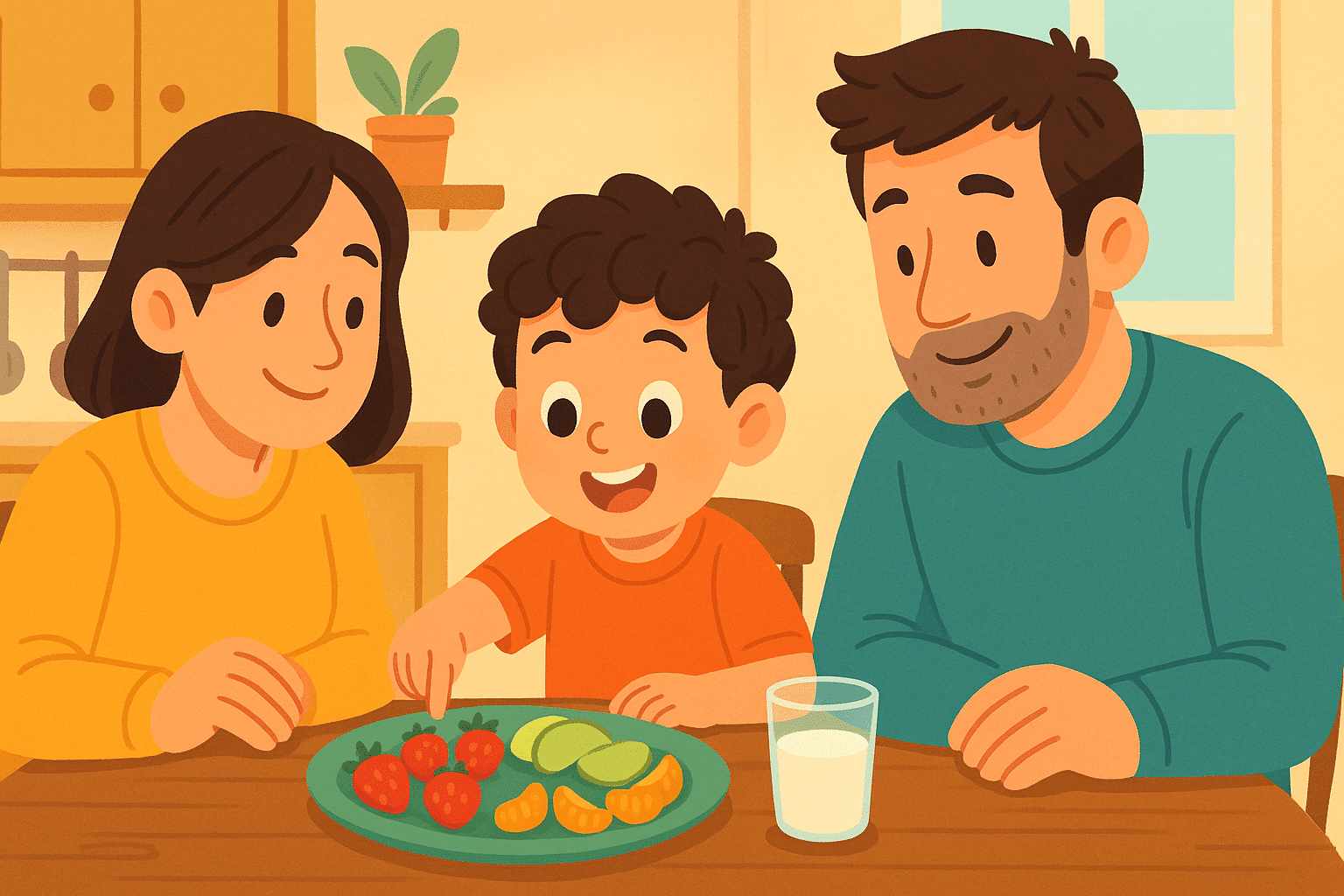
Snack math makes eating a chance to practice numbers. Children can count crackers or apple slices before eating. Sharing snacks equally introduces fairness and division.
Comparing who has more or less builds an understanding of quantity. This simple activity fits into daily routines and strengthens number sense without extra tools.
18. Cooking

Cooking is a practical way to teach math at home. Children can count spoonfuls, stir a set number of times, or measure ingredients with cups. These tasks show how numbers and amounts work in real situations.
Measuring introduces early ideas of fractions and volume, while following steps support sequencing. Cooking also builds patience, focus, and teamwork, making math part of everyday routines.
19. Math Walk

A math walk helps children see numbers and shapes in their surroundings. On a walk, point out numbers on street signs, house doors, or cars. Children can spot shapes in windows, traffic signs, or garden items.
Comparing sizes, like tall buildings and small houses, introduces measurement in real life. This activity keeps them active while practicing counting, recognition, and observation.
Combining math with daily life makes learning simple and natural. It shows children that numbers are everywhere and part of everything they do.
Tips for Parents & Teachers
Below are several ways to make math learning smooth and enjoyable for preschoolers:
- Keep it Playful: Children learn best when activities feel like play. Use songs, games, and stories instead of drills to keep math stress-free.
- Encourage Curiosity: Ask questions such as “How many steps will it take to reach the door?” or “Which bowl has more apples?” This invites thinking and understanding.
- Use Simple Prep Hacks: Everyday objects like cups, spoons, or toy animals can be turned into math tools. This keeps activities easy to set up and budget-friendly.
- Be Patient: Give children time to figure things out on their own. Gentle guidance helps build confidence and independence.
- Mix in Movement: Combine math with jumping, clapping, or dancing. This keeps energy levels high and makes lessons fun.
- Celebrate Small Wins: Praise efforts, not just results. Celebrating small steps keeps children motivated and excited to keep learning.
By keeping math playful, simple, and encouraging, parents and teachers can help children build strong skills while enjoying the process.
Conclusion
Preschool maths activities make learning enjoyable and natural for young children. Through simple games, songs, and playful tasks, they begin to understand numbers, shapes, and patterns in ways that feel exciting.
Everyday moments, such as counting snacks, sorting toys, or playing outdoors, become chances to practice math without pressure.
When learning feels like play, children build confidence and stay curious. This strong foundation helps them develop problem-solving skills and carry a positive attitude toward learning into school and beyond.
If you found these preschool maths activities useful, be sure to read my other blogs and learn more creative ideas, tips, and resources designed to make early learning simple, fun, and meaningful for your child.
Frequently Asked Questions
How much time should preschoolers spend on math each day?
Short, playful sessions work best, about 10 to 15 minutes at a time. The key is weaving math naturally into daily routines, rather than long lessons.
How do I know if my child is struggling with early math?
Look for signs like avoiding counting games, frustration with numbers, or difficulty recognizing shapes. If concerns continue, keep activities fun and simple, and consult a teacher for support.
How can technology or apps support preschool math learning?
Simple, interactive apps with number games or pattern puzzles can reinforce skills. Use them as a supplement, not a replacement for hands-on play.










